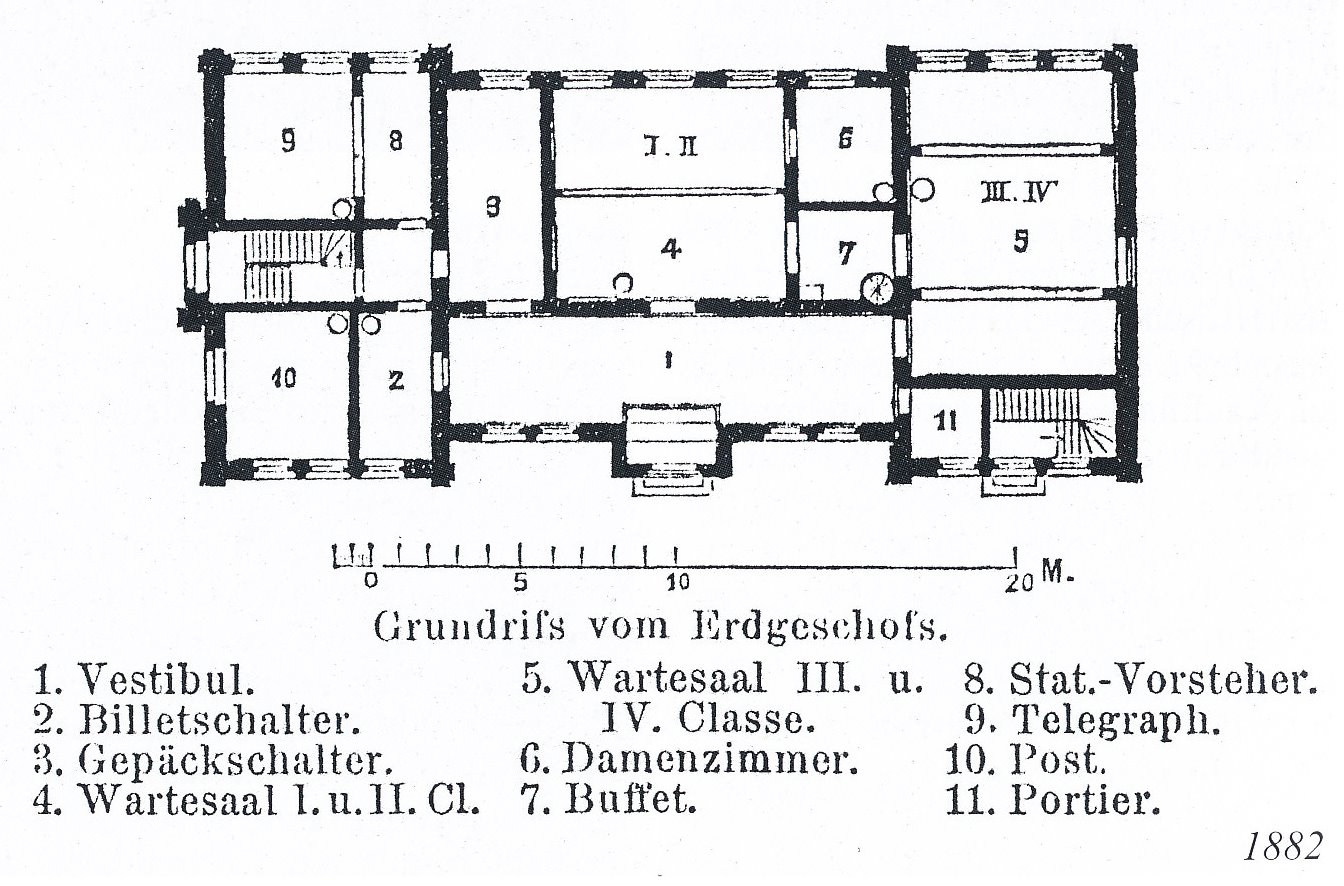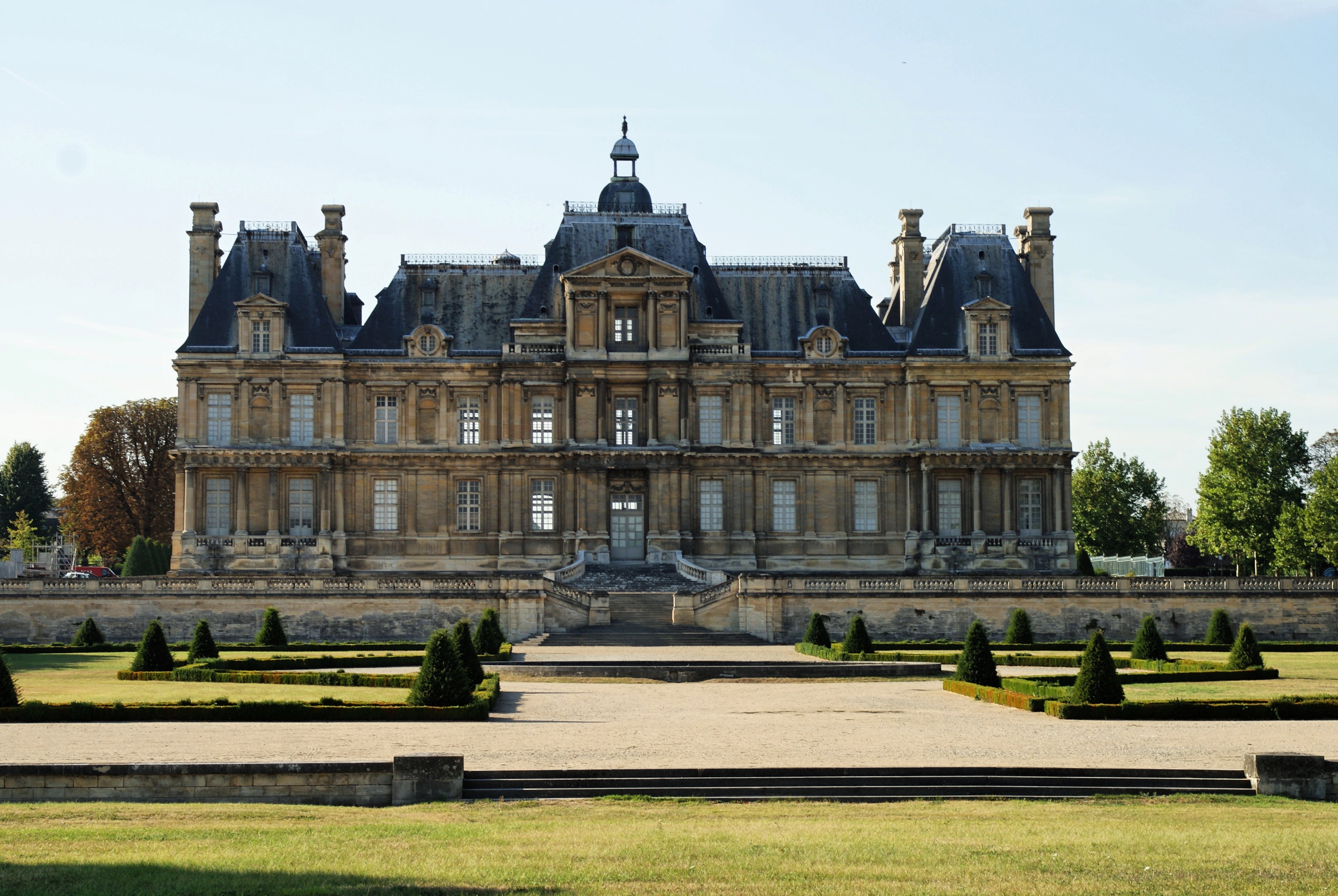|
Bad Hersfeld Station
Bad Hersfeld station is a through station in Bad Hersfeld in the German state of Hesse on the Bebra–Fulda railway. The first station was opened in 1866 and the current station building was completed in 1883. It is classified by Deutsche Bahn as a category 3 station. It is a stop for Intercity-Express and Intercity services and is a public transport node for northern Hesse. Since 2006, Cantus Verkehrsgesellschaft has operated regional services on the Fulda–Bad Hersfeld–Kassel route. Station buildings At the opening of the line between Bebra and Bad Hersfeld on 22 January 1866, a station building was built, only as a temporary measure, known as the ''Bude'' (shack). This building was later extended and still exists made of wood shingles south of the current station building. Its temporary nature was obviously a result of the Austro-Prussian War of 1866. The subsequent annexation of Hesse-Kassel by Prussia meant that the temporary station served for 17 years. The current st ... [...More Info...] [...Related Items...] OR: [Wikipedia] [Google] [Baidu] |
Romanesque Revival Architecture
Romanesque Revival (or Neo-Romanesque) is a style of building employed beginning in the mid-19th century inspired by the 11th- and 12th-century Romanesque architecture. Unlike the historic Romanesque style, Romanesque Revival buildings tended to feature more simplified arches and windows than their historic counterparts. An early variety of Romanesque Revival style known as Rundbogenstil ("Round-arched style") was popular in German lands and in the German diaspora beginning in the 1830s. By far the most prominent and influential American architect working in a free "Romanesque" manner was Henry Hobson Richardson. In the United States, the style derived from examples set by him are termed Richardsonian Romanesque, of which not all are Romanesque Revival. Romanesque Revival is also sometimes referred to as the " Norman style" or " Lombard style", particularly in works published during the 19th century after variations of historic Romanesque that were developed by the Normans in En ... [...More Info...] [...Related Items...] OR: [Wikipedia] [Google] [Baidu] |
Austro-Prussian War
The Austro-Prussian War, also by many variant names such as Seven Weeks' War, German Civil War, Brothers War or Fraternal War, known in Germany as ("German War"), (; "German war of brothers") and by a variety of other names, was fought in 1866 between the Austrian Empire and the Kingdom of Prussia, with each also being aided by various allies within the German Confederation. Prussia had also allied with the Kingdom of Italy, linking this conflict to the Third Italian War of Independence, Third Independence War of Italian unification. The Austro-Prussian War was part of the wider Austria-Prussia rivalry, rivalry between Austria and Prussia, and resulted in Prussian dominance over the German states. The major result of the war was a shift in power among the German states away from Austrian and towards Prussian hegemony. It resulted in the abolition of the German Confederation and its partial replacement by the unification of Germany, unification of all of the northern German sta ... [...More Info...] [...Related Items...] OR: [Wikipedia] [Google] [Baidu] |
Gothic Architecture
Gothic architecture (or pointed architecture) is an architectural style that was prevalent in Europe from the late 12th to the 16th century, during the High and Late Middle Ages, surviving into the 17th and 18th centuries in some areas. It evolved from Romanesque architecture and was succeeded by Renaissance architecture. It originated in the Île-de-France and Picardy regions of northern France. The style at the time was sometimes known as ''opus Francigenum'' (lit. French work); the term ''Gothic'' was first applied contemptuously during the later Renaissance, by those ambitious to revive the architecture of classical antiquity. The defining design element of Gothic architecture is the pointed or ogival arch. The use of the pointed arch in turn led to the development of the pointed rib vault and flying buttresses, combined with elaborate tracery and stained glass windows. At the Abbey of Saint-Denis, near Paris, the choir was reconstructed between 1140 and 1144, draw ... [...More Info...] [...Related Items...] OR: [Wikipedia] [Google] [Baidu] |
Finials
A finial (from '' la, finis'', end) or hip-knob is an element marking the top or end of some object, often formed to be a decorative feature. In architecture, it is a small decorative device, employed to emphasize the apex of a dome, spire, tower, roof, or gable or any of various distinctive ornaments at the top, end, or corner of a building or structure. A finial is typically carved in stone. Where there are several such elements they may be called pinnacles. The very top of a finial can be a floral or foliated element called a bouquet. Smaller finials in materials such as metal or wood are used as a decorative ornament on the tops or ends of poles or rods such as tent-poles or curtain rods or any object such as a piece of furniture. These are frequently seen on top of bed posts or clocks. Decorative finials are also commonly used to fasten lampshades, and as an ornamental element at the end of the handles of souvenir spoons. The charm at the end of a pull chain (such as for a c ... [...More Info...] [...Related Items...] OR: [Wikipedia] [Google] [Baidu] |
Gelnhausen Station
Gelnhausen station is the station of the town of Gelnhausen on the Kinzig Valley Railway in the German state of Hesse. History The station was built by the Frankfurt–Bebra railway as the station of the former county town of the district of Gelnhausen. Services commenced on the Hanau Ost–Wächtersbach section on 1 May 1867. Buildings The entrance building and the rest of the station buildings are now mostly classified as cultural monuments under the Hessian Monument Protection Act. Entrance building The entrance building was built in a Romanesque Revival style of Buntsandstein (coloured sandstone) and so added to the historic buildings of the Hohenstaufen town of Gelnhausen, which include the most famous Romanesque building in the city, the Imperial Palace (''Kaiserpfalz Gelnhausen''), but also the romanesque Marienkirche and other buildings from this time. The architect Paul Rowald also designed Bad Hersfeld station with the same layout and style. The building was bu ... [...More Info...] [...Related Items...] OR: [Wikipedia] [Google] [Baidu] |
Gable
A gable is the generally triangular portion of a wall between the edges of intersecting roof pitches. The shape of the gable and how it is detailed depends on the structural system used, which reflects climate, material availability, and aesthetic concerns. The term gable wall or gable end more commonly refers to the entire wall, including the gable and the wall below it. Some types of roof do not have a gable (for example hip roofs do not). One common type of roof with gables, the gable roof, is named after its prominent gables. A parapet made of a series of curves (Dutch gable) or horizontal steps (crow-stepped gable) may hide the diagonal lines of the roof. Gable ends of more recent buildings are often treated in the same way as the Classic pediment form. But unlike Classical structures, which operate through trabeation, the gable ends of many buildings are actually bearing-wall structures. Gable style is also used in the design of fabric structures, with varying degree ... [...More Info...] [...Related Items...] OR: [Wikipedia] [Google] [Baidu] |
Risalit
An ''avant-corps'' ( it, avancorpo or , plural , german: Risalit, pl, ryzalit), a French term literally meaning "fore-body", is a part of a building, such as a porch or pavilion, that juts out from the ''corps de logis'', often taller than other parts of the building. It is common in façades in French Baroque architecture. Particularly in German architecture, a corner ''Risalit'' is where two wings meet at right-angles. Baroque three-winged constructions often incorporate a median ''Risalit'' in a main hall or a stairwell, such as in Weißenstein Palace Weißenstein ( sl, Bilšak) is a town in the district of Villach-Land in the Austrian state of Carinthia. Geography Weißenstein lies in the lower Drau valley northwest of Villach. The highest point in the municipality is the Spitzeck at 1517 ... and the . Terms By position to the building A central avant-corps stands in the middle of the facade. A side projection is positioned off-centre. Two wings (usually) runn ... [...More Info...] [...Related Items...] OR: [Wikipedia] [Google] [Baidu] |
Jossa (Sinntal)
Jossa is a village in the German municipality of Sinntal in Main-Kinzig-Kreis in the state of Hesse. Jossa lies within the Spessart nature park and is a state-recognised health resort. The village has 664 inhabitants (as at: 31 December 2005) and covers an area of . Its councillor A councillor is an elected representative for a local government council in some countries. Canada Due to the control that the provinces have over their municipal governments, terms that councillors serve vary from province to province. Unl ... is Günter Walther (2008). {{Authority control Main-Kinzig-Kreis Villages in Hesse ... [...More Info...] [...Related Items...] OR: [Wikipedia] [Google] [Baidu] |
Cornice
In architecture, a cornice (from the Italian ''cornice'' meaning "ledge") is generally any horizontal decorative moulding that crowns a building or furniture element—for example, the cornice over a door or window, around the top edge of a pedestal, or along the top of an interior wall. A simple cornice may be formed just with a crown, as in crown moulding atop an interior wall or above kitchen cabinets or a bookcase. A projecting cornice on a building has the function of throwing rainwater free of its walls. In residential building practice, this function is handled by projecting gable ends, roof eaves and gutters. However, house eaves may also be called "cornices" if they are finished with decorative moulding. In this sense, while most cornices are also eaves (overhanging the sides of the building), not all eaves are usually considered cornices. Eaves are primarily functional and not necessarily decorative, while cornices have a decorative aspect. A building's projecti ... [...More Info...] [...Related Items...] OR: [Wikipedia] [Google] [Baidu] |
Railway Divisions In Germany
In Germany and Austria, the running of railway services for a railway administration or the regional network of a large railway company was devolved to railway divisions, variously known as ''Eisenbahndirektionen (ED), Bundesbahndirektionen (BD)'' or ''Reichsbahndirektionen (RBD/Rbd)''. Their organisation was determined by the railway company concerned or by the state railway and, in the German-speaking lands at least, they formed the intermediate authorities and regional management organisations within the state railway administration's hierarchy. On the formation of the Deutsche Bahn AG in 1994 the system of railway divisions (''Eisenbahndirektionen'') in Germany was discontinued and their tasks were transferred to new "business areas". Germany State railway divisions Incorporation into the state government The first railway divisions of the various German state railways (known as ''Länderbahnen''), usually reported to a specific government ministry. For example, in Prus ... [...More Info...] [...Related Items...] OR: [Wikipedia] [Google] [Baidu] |

.jpg)

.jpg)



